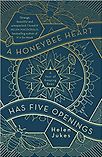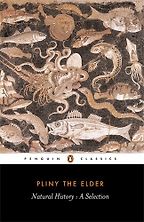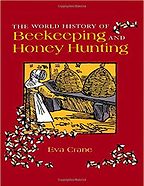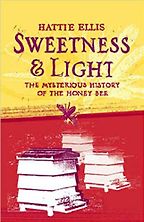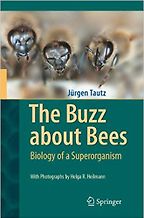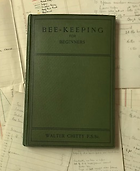Before we talk about the books, what do you love about honeybees?
There’s a sense of fluidity about a colony of honeybees which unsettled me when I first started beekeeping. They were so changeable! And with that open entrance to the hive, so unfixed! But which I came to appreciate and even to love. In fact, the more I learned, the more I was struck by how they seemed to slip free of each of the human-made categories I’d tried applying to them. Does a honeybee exist as an individual or as part of a collective? Is a colony wild or domestic? Is honey an animal product, or is it plant-based? The answer to each of these questions is somewhere in between.
I also love how incredibly sensitive honeybees are—how rich and complex their sensory worlds. A honeybee has five eyes; she has thousands of sense receptors in each one of her antenna; she listens through her knees; she navigates using tiny crystals in her abdomen, and light receptors on top of her head, and the messages she’s been passed by the colony. She is so intensely affected by what’s happening around her—and as I learned more about the wider issues affecting pollinator populations, I kept thinking of the canary birds that used to be taken down mines; how they’d drop dead if there were poisonous fumes around, alerting miners to imminent danger. The bees are telling us something important. We must urgently pay attention to them.
“I love what honeybees do to me. I’m forced back into the role of learner each time I open the hive”
I also love also what honeybees do to me. I’m forced back into the role of learner each time I open the hive—I can’t ever get too confident around them. They seem so alien to me but, surrounded by tens of thousands of buzzing insects, I am the one who doesn’t belong. I have to listen and look and keep quiet and calm and none of this is possible if I’m carrying too many expectations about how the colony is supposed to be. This doesn’t always come easily—it’s good practice, for me.
All that said, I’m not sure I can honestly say that I love bees. I find them so unsettling. I am so endlessly fascinated, disturbed and confused by them. Humans have been keeping bees for over six thousand years, and there are layers and layers of history and meaning at work each time I open a hive. I feel bound to them – to some extent, we all are. That’s a sometimes troubling fix to be in.
You mentioned that a honeybee has five eyes. Your book tells us that its heart has five openings. What is lurking in that title?
Yes! Five eyes, and five openings to the heart. I became quite obsessed with honeybee anatomy in my first year as a beekeeper, perhaps in part because I was feeling quite disconnected from my own body, and certainly at odds with my ‘heart’. Urban life seemed so full of noise and impenetrable surfaces; I had the feeling of never quite getting to the heart of things. As I learned more about the inner workings of the colony, an almost alchemical shift seemed to take place. There was a lot of fuss and bother involved in the process, but—strangely, unexpectedly—I felt my own body relaxing, unfolding, in a way that it hadn’t before, or certainly not for a long time. I mean, I know that alchemy isn’t real. But in the company of the colony that year, it wouldn’t have seemed such a great leap to start believing in it.
Five Books interviews are expensive to produce. If you're enjoying this interview, please support us by donating a small amount.
The book describes how you became a beekeeper, and reflects on what that means. At one point, you note a spectrum of words and meanings associated with the word ‘keep’. These include observation, care, nurture, interception, seizure, absorption, maintenance, preservation, retention, restraint.
Yes, my notion of what it means to keep changed a lot that year. Lots of our associations around keeping have to do with fixing something or locking it down, but you can’t do that with a colony of honeybees – they wouldn’t survive. I came to understand it in a more open-handed way, as being about paying attention to another creature, being present to its needs, making space for it to thrive. As a template for a good relationship, I think this extends well beyond our dealings with the hive.
Your first choice of books about honeybees is Pliny’s Natural History. What does he have to say about honeybees?
Pliny covers a lot of ground! The Natural History was written in the first century AD and is a bit like going on a fantastical adventure trail through the natural world. He writes in detail about bees, covering everything from the division of labour inside the hive—some build, others polish…others prepare food — to the origin of honey: it is the saliva of stars, he writes, or the perspiration of the sky, or some kind of moisture produced by the air purging itself.
Many Classical thinkers wrote about honeybees, and I especially love reading their descriptions for the role that their imaginations played. With Pliny, you can almost feel him filling the gaps in his knowledge with flights of fancy as he writes that honey falls to earth from a great height, picking up a great deal of dirt on the way down, sliding over foliage and becoming tainted by the juice of flowers—thereby explaining its different colours, scents and consistencies. Sometimes this guesswork proved surprisingly accurate. Aristotle wrote that honeybees are deaf—and so it was found, some thousands of years later, they lack an auditory system. In her book Bee, Claire Preston describes a common folklore belief that bees were terrified of thunder and lightning—and in fact they can sense when a storm is coming. So perhaps imagination can help lead us into new truths sometimes. A little fantasy has its place.
Tell us about your second choice, Eva Crane’s World History of Beekeeping and Honey Hunting
>Eva Crane was born in 1912, and trained initially as a mathematician. She turned to bees when a friend gave her a beehive to supplement the sugar rations during World War Two. She went on to write many books on bees and beekeeping, including this encyclopaedic tome, which I spent hours poring over in the reading rooms at the British Library. Dr Crane’s scope is vast. She travelled to over 60 countries and many remote places in the course of researching this book, the first comprehensive history of what she called the people’s use of social bees.
“I frequently had to work at the limits of my own knowledge,” she writes, ‘but was greatly helped by specialists in various subjects.” She gathered knowledge and understanding from many areas, and is meticulous in the way she cross-references and records her sources—almost as though she means to demonstrate the bee-like, cross-pollinating nature of her work.
Tell us something striking about honeybees you learned from the book
I was especially struck by how beekeepers throughout history have felt compelled to look in on the interior life of the colony. Apparently Aristotle tried building a window in his hive, though that didn’t work: the bees obscured it with propolis, a sticky resin made from buds and sap. Pliny also described hives fitted with transparent mirror-stone—probably the mineral mica. Later beekeepers experimented with escape hatches, divided compartments and multiple tiers, but they didn’t learn much more about what was going on inside the hive until the study of honeybees underwent a revival at the beginning of the Enlightenment era, by which time there were more tools and materials available. In 1653 the Reverend William Mewe constructed an octagonal hive with different levels, each one fitted with a small window sealed by a hinged shutter; in 1655 the diarist John Evelyn described a transparent apiary belonging to Dr Wilkins of Oxford, complete with dials, little statues, and vanes. It’s quite possible Evelyn’s imagination was running away with him here. Large sheets of glass weren’t produced in England for another few decades, and the window in Dr Wilkin’s hive was later described by a Mr Robert Wood as a peece of glass a little bigger than my hand.
“Beekeepers throughout history have felt compelled to look in on the interior life of the colony”
With developments in glass manufacturing, what we now call the Observation Hive arrived: a single comb bordered on each side by glass panes, and a whole colony on display to the viewing public. It was a popular exhibit. For a society on the cusp of industrialisation, the bees were intended to demonstrate willing and productive labour, all working for the common good.
The hive has taken so many different forms, and what fascinated me most as I read Crane’s book was the way that each one seemed to reflect something of the culture that built it—from the roughly hewn basket skeps used by subsistence farmers through the middle ages to the baroque structures belonging to the upper classes of the seventeenth century right up to the endlessly modifiable, easily replicable, intervention-oriented hives in use today.
Your third book, Sweetness & Light by Hattie Ellis, is also a history of the honeybee. How does it complement Crane’s work?
If Crane’s leather bound tome is like a textbook, Hattie Ellis’ Sweetness & Light is like a storybook—a fluid and lyrical history of bees and honey and their significance in human culture, covering everything from the use of mead as an aphrodisiac to the passion for collecting insects among a newly urbanised Victorian middle class, and Muhammed Ali’s special penchant for pollen (he thought it boosted his energy). Richard Mabey, one of my heroes, describes this book as richly informative, and beautifully written, and I think he has it just about right.
I’m no historian, and don’t always find it easy to integrate lots of information at once—my brain just doesn’t seem to work that way. So during the writing of my own book I was greatly helped by Sweetness & Light and others like it (Claire Preston’s Bee and Bee Wilson’s Story of the Honeybee and Us among them), which became like launchpads for diving off into other things. I’d go a little way with Ellis, come across something that caught my eye, then jump sideways into Pliny’s Natural History, or Aristotle’s Complete Works, or Crane’s World History, or the letters of seventeenth century natural historians. It might seem quite a strange way of doing research, but for me that action of swimming out and coming back seemed to work quite well.
Tell us about your fourth book, Jürgen Tautz’s The Buzz About Bees. The blurb says that it “destroys the cute notion of bees as anthropomorphic icons of busy self-sacrificing individuals and presents us with the reality of the colony as an integrated and independent being―a ‘superorganism’—with its own, almost eerie, emergent group intelligence.”
Yes. Honeybees have become symbols for different aspects of human culture since we first became interested in them, and often to rather contradictory ends—from Pliny’s descriptions of well-mannered and industrious workers sacrificing themselves for the good of the whole, to post-industrial visions of unindividuated subjects held as cogs in a machine. Tautz’s book makes an effort to blow all this apart with his intensely researched, highly scientific gaze. I thought this book was brilliant, and as in-depth a study of honeybee biology and colony processes as any I came across. I initially borrowed it from a friend, and got so attached that he didn’t get it back until nearly a year later, when I finally got around to buying a copy myself.
Get the weekly Five Books newsletter
By describing the colony as an integrated and independent being Tautz experiments with the notion that we should understand it as having the same impulses, intelligences and rhythms as a mammal. That’s an exciting and challenging idea, but if I’m honest what I enjoyed most about this book was not the theory so much as the detailing of his investigations into the minutiae of honeybee sensory experience and communication. Did you know, for example, that honeybees’ colour vision comes and goes depending on what they’re doing? In flight, they see in black and white; their colour vision only returns as they approach a landing spot. Their brains are so small they’ve evolved to shut down certain capacities so as to function more efficiently. This gets even more extraordinary when Tautz begins experimenting with different landing spots. He discovers that colour vision is stronger when bees are approaching a flower than when they’re nearing the nest site. Colour vision, it turns out, is important for discriminating between different pollen and nectar sources; it’s less relevant when picking out the hive.
Reading the book, one gathers a sense of how all these highly sensitive interactions between bees and their environments are contributing to that emergent group intelligence Tautz talks about, and at times it really does begin to seem quite eerie. Reading this book, I found myself returning to that thought of the in-betweenness of honeybees. A colony is individual and collective—a mass of separate beings and a superorganism. Honeybees both fill and exceed our categories, again and again and again.
Your final book choice is a beekeeping journal from the 1940s?
I realise this probably isn’t strictly allowed on Five Books. This isn’t a recommended title but an actual paper-and-sleeves object. The book was gifted to me as part of a collection of beekeeping manuals belonging to the mother of a woman I met last year. She’d come across them while going through her mum’s old things, and hadn’t wanted to throw them out. I thanked her very much and didn’t think much more about it until I got home and opened them up, when I discovered pages of detailed observation notes tucked inside them, with graphs and charts describing the movements and changes of different hives. A friend of mine has recently begun trying to decipher them. The fascinating thing is how it considers the apiary— that is, a group of hives—as a whole. Most modern hive-records look at a single hive, with separate notebooks for each hive. This way of recording takes a more holistic view. It expects there to be interaction between the hives. At a glance it’s easy to compare the seasonal changes from each year.
I wanted to include this book and its accompanying notes in part because I think they’re so singularly fascinating, but also because they remind me how much I can learn just by watching the hive. When I started beekeeping, I was advised to start a notebook. Those notes became so important, and I imagine I learned just as much from this practice of looking and recording as I did from sitting and reading. Well, perhaps not as much. But certainly I absorbed things in a way I don’t think I could have elsewhere.
Five Books aims to keep its book recommendations and interviews up to date. If you are the interviewee and would like to update your choice of books (or even just what you say about them) please email us at [email protected]

